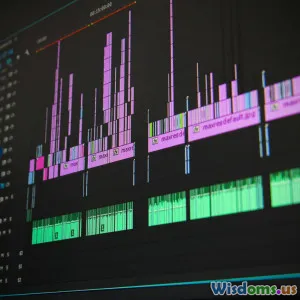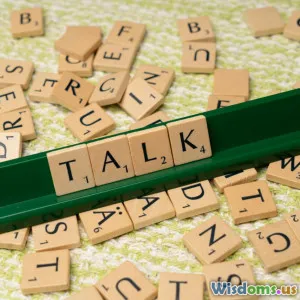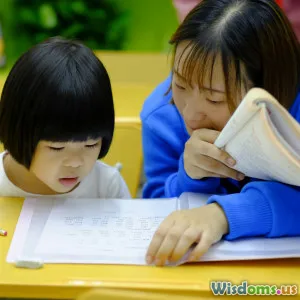
How Much Linguistic Diversity Will The Next Decade Lose
14 min read Explore projections on global linguistic diversity loss by 2034 and what drives language extinction. (0 Reviews)
How Much Linguistic Diversity Will The Next Decade Lose
Language is more than just words—it's the vessel of collective memory, identity, and wisdom. Across our increasingly globalized world, thousands of languages shape and reflect distinct ways of seeing and understanding reality. Yet experts warn: the coming decade could witness an unprecedented loss in linguistic diversity. What are the forces driving this change, and what can be done about it?
Human Heritage Under Threat

Every language is the living record of generations. It encodes specialized ecological knowledge, oral literature, medicinal practices, and the strivings of communities. According to UNESCO, of the approximately 7,000 languages spoken globally, about 40% (over 2,800 languages) are considered endangered. The linguist David Crystal estimates that, at the current rate, a language dies every two weeks.
For example, the Aka-Bo language of the Andaman Islands fell silent in 2010 with the death of its last speaker, Boa Sr. In Australia, over 90% of aboriginal languages could vanish by 2050 unless urgent measures are adopted. This wave of extinction is not just a numeric reduction, but a dramatic impoverishment of worldwide cultural and intellectual diversity.
Main Drivers of Language Loss

Globalization and Language Shift
One powerful catalyst for language loss is globalization: economic integration, migration, and the spread of global media have converged to prioritize world languages like English, Mandarin, and Spanish. Parents, recognizing the greater utility of these major tongues for jobs and social mobility, may stop passing down their native languages at home. In Nigeria, an estimated 450 native languages are spoken, but English, used in many public domains, crowds out indigenous vocabularies.
Technology and Digital Communication
The internet's expansion has had mixed consequences: while some threatened languages, like Irish and Hawaiian, enjoy digital revitalization efforts, the majority remain absent online. According to Mozilla’s survey, fewer than 5% of the world’s languages are represented digitally in any real way. Technologies such as AI-powered language models further entrench dominant tongues. When phones, search engines, and chatbots only "speak" global languages, millions feel pressure to assimilate linguistically.
Education Policies and Urbanization
Many states use one or a few national languages for official education, pushing smaller ones out of formal domains. In India, for instance, regional language schooling persists, but Hindi or English dominates higher education and white-collar employment. Simultaneously, as rural populations move to cities, they often abandon native languages for urban ones, as seen in Mexico where indigenous tongues are increasingly rare among youth in metropolises.
Predictions: How Many Languages Will Disappear by 2034?

Extrapolating current trends is sobering. UNESCO estimates that if the present rate persists, by 2050 half of today’s languages could become extinct. The next ten years may see the loss of 400 to 600 languages, or one every week. This isn’t evenly distributed—most of these disappearing tongues have fewer than a thousand speakers, with many single communities shouldering tragic responsibility.
For example, Papua New Guinea, hosting the highest linguistic diversity on Earth with more than 800 languages, faces acute threats due to shifting education and intermarriage. Vanuatu, with over 100, may witness dozens vanish within a generation. Meanwhile, Europe—once home to robust linguistic multipolarity—is rapidly consolidating into English, German, Spanish, and French speaking zones.
A longitudinal study published in Nature (2022) suggested that, absent urgent action, the coming decade might be "the steepest period of global language attrition in human history." Since language extinction is often irreversible, families and communities find themselves racing against the clock.
Why Linguistic Diversity Matters: Beyond Words Alone

Local Knowledge and Ecosystem Stewardship
Languages are not arbitrary sound systems but repositories of unique ecological knowledge. The Maori of New Zealand, for example, possess a language rich with terms for native plants and animals absent in global languages—an encyclopedic treasure for conservation. Across the Amazon, indigenous languages encode sustainable forest management techniques honed over millennia. When a language dies, so does our path to that knowledge.
Health, Identity, and Social Wellbeing
Studies show that communities where ancestral languages are maintained have lower rates of mental health problems and substance abuse. For instance, Canadian research discovered that suicide rates in First Nations groups dropped significantly when more children spoke their native tongues. Language is key to dignity, belonging, and overall wellbeing.
Diversity Fosters Human Ingenuity
Just as biodiversity underpins resilience in nature, linguistic diversity expands the cognitive and cultural flexibility of our species. Unique syntactic structures, systems of categorizing the world, and concepts—such as those for time, kinship, or emotion—are often untranslatable, offering fresh insights into human consciousness.
Consequences of a Reduced Linguistic World

A contraction in linguistic diversity brings profound consequences:
-
Homogenization of Culture: As dominant languages triumph, distinctive worldviews, philosophies, and artistic forms are edged out. The loss of dialects even affects regional literature rich in idioms and indigenous genres.
-
Reduced Innovation Potential: Each language's grammatical features and metaphorical arsenal extend what its speakers can express and invent. Losing this variety may narrow the spectrum of possible thought.
-
Erosion of Minority Rights: When people cannot use their languages in schools, courts, or public spaces, their political and economic rights are often sidelined. Language loss reinforces inequality, particularly for indigenous and marginalized groups.
-
Loss of Historical Records: Oral traditions, mythologies, and unwritten genealogies are frequently passed down only in first languages. Their errasure severs ties to heritage and ancestry.
As linguist Tove Skutnabb-Kangas argues: "Linguistic genocide in education" still occurs wherever children are forced to abandon mother tongues for dominant ones, scarring societies for generations.
Charting a Path Forward: Action and Advocacy

Community-Led Revitalization
Globally, there are inspiring efforts of small language groups fighting not just for survival but for resurgence. The revival of Hebrew in Israel set a precedent, but more recent models abound:
-
Māori in New Zealand: Through Kohanga Reo (language nests) and college-immersion programs, Māori parents and elders bring the language to preschools and homes.
-
Wampanoag (Wôpanâak) in the United States: Having lacked a native speaker for over a century, the tribe used colonial-era documents and collective memory to teach a new generation in schools.
-
Welsh in Wales: An aggressive mix of official status, compulsory education in Welsh until age 16, bilingual signage, media channels, and government support have reversed decline.
Even in crisis, community will and pride remain crucial factors resisting global trends.
Technology as a Double-Edged Sword
Can technology help? While the digital era turbocharges dominant languages, it's also democratizing tools for the marginalized:
-
Online Dictionaries: Projects like Living Dictionaries digitize fieldwork, pronunciations, and local stories, making them accessible worldwide.
-
Apps and Software: Programs like Duolingo and Rosetta Stone, in collaboration with local creators, increasingly include endangered languages (e.g., Hawaiian, Navajo, Scottish Gaelic).
-
Social Media Movements: Hashtags and user-generated content have sparked movements such as #SpeakGamilaraay (Australian Aboriginal language) and #IndigenousTwitter, offering spaces to connect and create in native tongues.
The main challenge: keeping pace with extinction rates and ensuring local input in technology design. Minority language AI tools must be shaped by the very communities that stand to benefit.
Policy and Education Reforms
Forward-looking policies include the formal recognition of minority languages, protected language rights in courts and public life, and government-backed multilingual education. The Basque region's embrace of Euskara is a model: official documents, radio stations, and cultural festivals support its renaissance. Contrarily, regions neglecting protection—such as much of the Russian Federation—suffer ongoing losses despite rich linguistic landscapes.
UNESCO’s 2022 declaration of the International Decade of Indigenous Languages (2022-2032) is a landmark, calling on member states for robust action plans: curriculum reform, funding, and mass media in native languages.
How Individuals Can Make a Difference

Everyone can participate in preserving linguistic diversity, regardless of fluency or heritage. Here’s how:
- Learn local phrases: Whether traveling or living in multicultural cities, using a greeting in lesser-known languages encourages speakers and shows respect.
- Support community events: Attend local festivals, art shows, or storytelling evenings; these events bolster pride and intergenerational engagement.
- Share and promote resources: Amplify digital projects and forums highlighting endangered languages.
- Advocate for policy: Campaign for government recognition and resources for multilingual education and media.
- Donate: Many revitalization efforts are volunteer-led. Supporting organizations—like the Endangered Language Fund or First Peoples’ Cultural Council—makes tangible difference.
Facing the next decade—with hope and realism

With the flickering out of each language, our species loses stories, strategies, and a part of itself. Yet the next ten years need not only be a decade of loss. Thanks to stronger international frameworks, investments in technology, and most powerfully, grassroots determination, dozens of languages have stabilized or returned from the brink.
Governments, technologists, educators, activists, and ordinary people all have roles to play. The landscape for linguistic diversity in 2034 is being shaped now—by choices at every scale. If we value an abundant, resilient, and multifaceted humanity, prioritizing language preservation is not a romantic ideal, but an urgent and pragmatic necessity.
Rate the Post
User Reviews
Other posts in Language Documentation & Revitalization
Popular Posts














